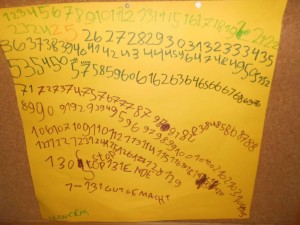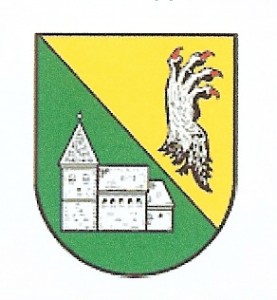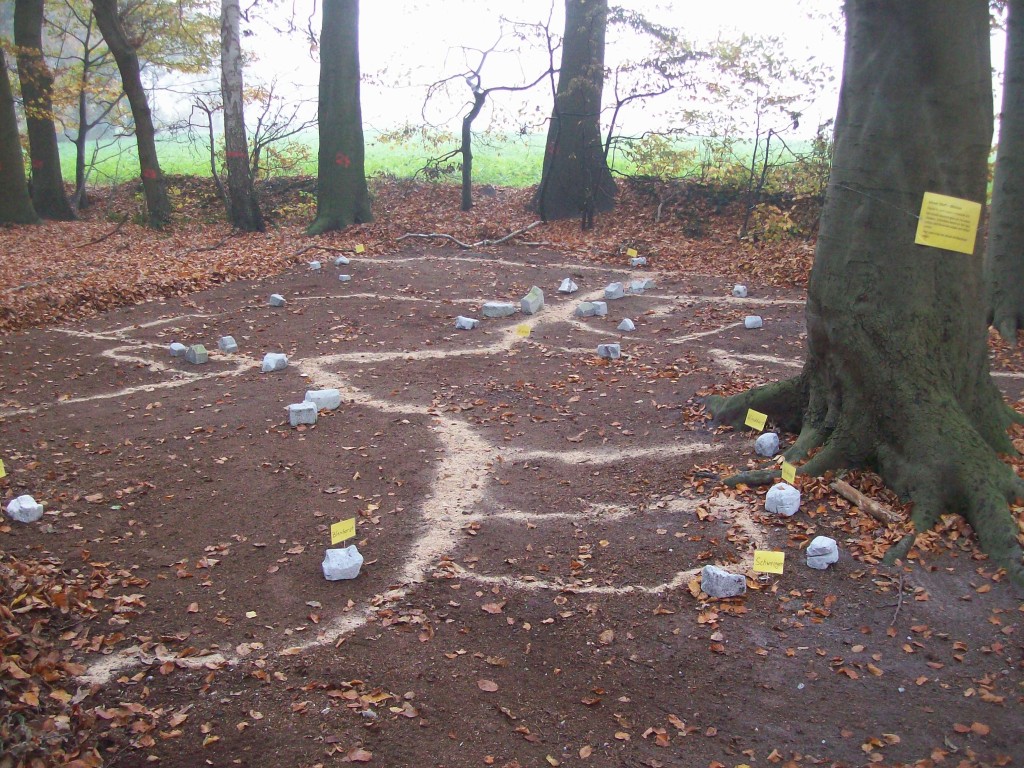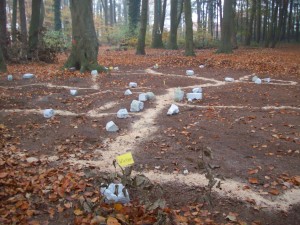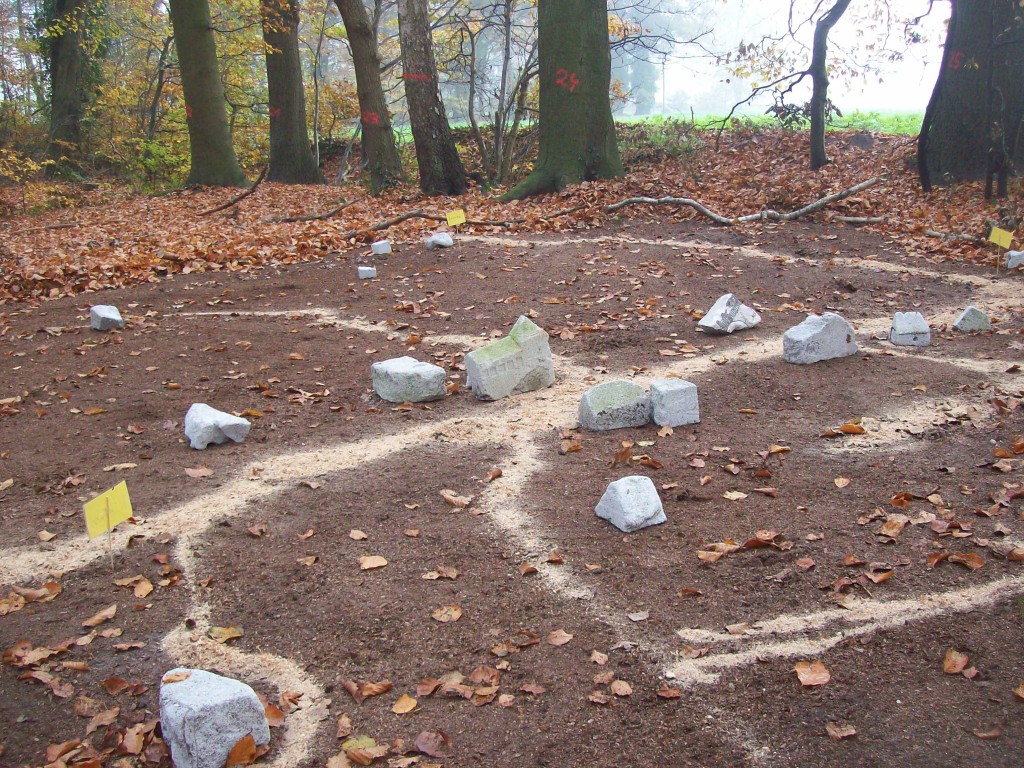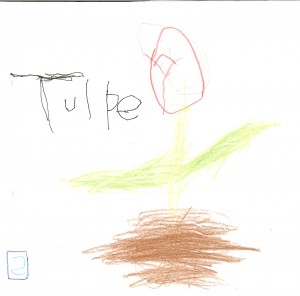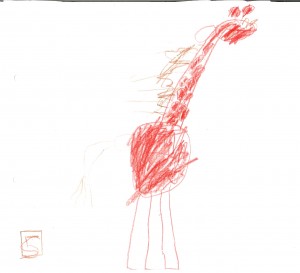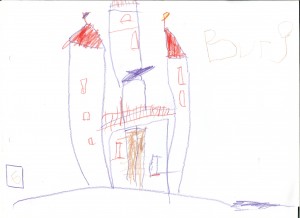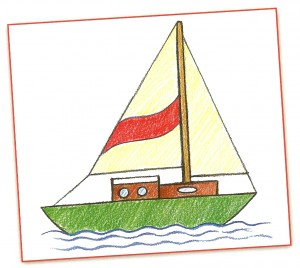by Hanna Vock
Gifted children frequently have two problems with their parents and/or their teachers. Often, they experience as early as in kindergarten, especially in the last two years, being underchallenged and facing incomprehension.
Being underchallenged
means, that the intellectual needs and demands of the gifted child are being neglected.
Incomprehension
means that the child’s originality, which is to a large degree determined by the child’s giftedness, is not being appreciated and certainly not understood.
For what this incomprehension and this being underchallenged may look like,
please see
Specific Problems Gifted Children Face in Kindergarten
Strong Feelings
This article deals with the consequences of these two problems.
If one of these problems, or even both, persist over a longer period of time, permanent incomprehension and permanently being underchallenged by their environment, will lead to
permanent frustration,
which may come with one of the following feelings, depending on the individual personality of the child
Confusion
Distress
Boredom
Emptiness
Guilt
Sadness
Disappointment
Anger
Rage
People of all ages will try to escape from situations which create such feelings permanently. They dare to separate from their partners, to flee their parents house, to avoid the old people’s home, to skip school, to search for a more adequate occupation.
Little children have little opportunity to change their situation. Some try anyway – like that little boy in the following example and the even younger Anita, who we’ll be talking about later.
… in a nutshell ….
Permanently being underchallenged intellectually and permanently not being recognized by one’s environment makes for a permanent frustration even in pre-school age children, which can have serious consequences.
In order to avoid these consequences, or if these have already eventuated, to resolve them, the child must be better understood and its intellect must be more adequately stimulated.
„I resign!“ – but often there is no way out within sight
This is the example of a child who is trying to avoid being underchallenged:
A gifted child finally gets to go to school. He has been bored a lot in kindergarten, now he is hurrying to school – with great expectations for learning. He is 5 years and nine months old on his day of school enrolment. He can read books fluently and calculates like in third grade. After the school day his mother asks him: „How’s it been? What did you do in class?“ The five-year-old gives a detailed account of how he was colouring a worksheet and about the letter „o“. He had then asked the teacher what they would do the next day. She said they would get to know some words with the letter „o“.
He said:
„Yes, thanks. I think, I’ll resign.“
This five-year-old fully understands the situation: he doesn’t fit here either. For him there is nothing to learn here. Unfortunately, he is not entitled to resign. Instead, he has long frustrating schooldays ahead of him.
Another example:
Quote (a gifted girl, 11 years, 7th grade) upon having returned from school that afternoon:
„Would you mind telling me what I went to school for today???
Would you mind telling me just why I spent 6 hours there today??? You want me to tell you you what I’ve learned there today???
Nothing! Once more: Nothing!!!“
Permanent frustration that shows as rage, rage over a school that doesn’t meet learning needs, a school which forces one to sit through tedious lessons and demands way too much conformity.
Children in kindergarten face a similar situation; yet, they cannot grasp and verbalise their situation so well.
At pre-school age we can detect:
The mood changes towards the negative.
If there is no way out, these feelings will inevitably cause aggressive or depressive moods. If these warning signs are ignored the annoyance may solidify and lead to generally aggressive behaviour or pathological depression.
But even the early stages of such a development can be dramatic:
A once active and mostly cheerful child turns into a child that is discontent and puts a constant strain on its environment.
Anita is a good example for this.
At age 4;1 she joined my kindergarten group. She had already attended another kindergarten. Her parents had sought my advice because Anita was determined to never go to the old kindergarten again. They were worried because Anita had undergone great changes since she had joined that kindergarten.
„She used to be cheerful, funny, mostly in a good mood and very active. Now she’s mostly a nuisance. She complains about everything, she is naughty and gets fresh with us, never feels like doing anything, acts up every morning when she’s supposed to go to kindergarten and more often than not gets in her own way with her bad moods“,
the mother reported. Since the parents had noticed her accelerated development they had her tested and a very high IQ was diagnosed.
When I got to know Anita she was not quite 4 years old. We had a long conversation and also spent some time looking at a picture book. I noticed her vast vocabulary, her fluent and expressive speech, and above all, her smart questions and thoughts about a picture book story. If I had not been able to see her, but only heard her speak, and if I had not known her age, I might have thought she was a smart and well fostered 6-year-old girl. On that day I saw her the way she – according to her parents – „really“ was; that is in a positive mood, active, cheerful and charming.
Anita’s parents had already decided to find a new kindergarten and they had already looked at two other facilities together with Anita. Each time Anita declared decidedly that she didn’t want to go there either.
Both parents, working changing shifts, had a huge amount of problems now.
Since Anita had been tested gifted, it stood to reason that the cause was to be found in connection with her giftedness and her experiences in kindergarten, especially since the parents were sure, there had been no changes in family life.
After all, permanent frustration could just as well have its origin in poor child-rearing or the loss of a beloved person (which aside from sorrow also brings about great frustration – feeling the loss in everyday life).
Lately parents have sometimes been tempted to ascribe their children’s behavioural problems to giftedness – even if there were no signs of giftedness or the child had noticeably serious problems within its family.
This is where we kindergarten teachers have to be careful and also take other causes into consideration, especially if, even upon professional observation, we do not recognise any indicators of giftedness.
See also:
Indicators of Possible Intellectual Giftedness
Examples of Initial Observations
Problematic Behaviour
One kindergarten teacher writes:
„Clownishness is a big issue for me these days. At the kindergarten, where I’m doing my year of recognition as a kindergarten teacher, there is a boy whose clowning around has become permanent.
I am under the impression that he is so underchallenged that he keeps coming up with all this nonsense, just so that the other children will admire him or at least laugh. He seems to be the leader of the group and even the kindergarten teachers submit to him. They engage in his little schemes, they allow themselves to get involved in his silly games and eventually make fools of themselves.
The boy has quite well understood how to manipulate the adults. He himself, and the adults too, don’t see that he is in a dead end, that his talents thrive in only one field (being silly).
Well, a good comedian is always welcome, he gets the others to think. But this boy only brings chaos into the group. The other boys admire his ability to raise hell and copy his ways as best they can. Then it may happen that one after the other tells the same joke or ducks out of a task – just to make the same impression as he does.
The only thing the kindergarten teachers can do is to admonish each and every one, threaten them with punishment, appeal to them, take a deep breath, get distracted and eventually become aware of the chaos around them again. I do not recognise any other pedagogic action.
What can be done?“
Firstly, it is important to understand why the boy resorts to joking around.
Depending on the child’s personality – and depending on the constitution of the child’s social environment – the above described feelings and negative moods may lead to the following behavioural patterns:
aggressive mood
disturbing – clowning – destroying – punching others – screaming, crying – spatting – aggravating others, assaulting – being defiant – refusal – raging
depressive mood
retreat – becoming silent, going unnoticed – auto-aggression – separating oneself – conversion (stomach-, headaches) – mourning, frequent crying – backing off from others and from tasks – weariness, fatigue – exaggerated helpfulness – inactivity
Some children alternate between the two kinds of disgruntlements and the resulting problematic behaviours, others may be aggressive in the family and depressive in kindergarten – or vice versa.
How is this to be explained?
The back-and-forth between depressive and aggressive disgruntlement is rooted in the manifold and often diffuse feelings which are created by permanent frustration.
A simplified example:
The child is angry and enraged about the fact that, today again, nothing interesting happened. It is being defiant and rages about at the dinner table. The parents’ reaction may be anger, they may reproach the child with its bad behaviour. The child keeps up the defiance, feelings of guilt are rising inside. The child is aware that it has been unnerving its parents – and actually it didn’t want that, but now it has happened again. The child is sad and despairs of its incapacity.
The parents soon calm down and the (still) healthy child finds its inner balance again.
But permanent frustration has the next occasion for rage and disappointment lurking just around the corner and the cycle of disgruntlement begins anew.
The differing behaviours the same child may show in the family and in kindergarten (or at school) can be explained as follows:
We have observed time and again that well reared gifted children, when – as did Anita – joining kindergarten at the age of three, want to do everything right. They are quite anxious to understand everything immediately, to abide by the rules, cause no trouble:
they want to be „proper“ kindergarten children right from the start. That costs a lot of energy.
Yet the children are overwhelmed, if they for all their effort don’t really get on and aren’t comfortable with the situation, if they don’t feel recognized and understood and if they don’t get the right amount of stimuli. That’s what apparently happened to Anita.
Anita’s parents were able to take the child’s aggressiveness with relative ease, that is why Anita showed her disgruntlement and the resulting aggressiveness exclusively at home. The kindergarten teachers at her first kindergarten didn’t understand what the parents were expecting of them, since Anita showed an entirely positive and inconspicuous behaviour in kindergarten. For them it stood to reason that the parents were doing something wrong at home. The parents sensed that suspicion and it made them feel uneasy.
On the other hand, children, whose parents tend to be more authoritarian and have little tolerance for child-like aggression, but rather sanction it with punishment, will try to avoid these sanctions by playing the well-behaved child at home. In Kindergarten, where no punishment is to be expected, the disgruntlement is then expressed just the more. In such cases parents and kindergarten teachers have a hard time respecting and trusting each other.
In both cases the observations made by parents and kindergarten teachers diverge greatly and communication is difficult. It can then be helpful if both sides relate to each other the occurrences of misbehaviour in their respective spheres as precisely as possible.
What is to be done?
Gifted children at pre-school age will mostly realise and recognise the problems with their behaviour themselves. That is why it rarely helps to keep pointing out the destructiveness of their behaviour to them; they are often quite aware of it.
Yet, without help they cannot escape the frustrating over-all situation and the obstructive behaviour keeps coming up.
If the gifted child is not too disturbed yet and still disposes of healthy psychological resources, it will show us in which way we can help.
Learning from the Children
Children who are being well understood and supported in their family often produce their own positive ideas and strategies to bring about an end to the frustrating situation:
In kindergarten they will for example show …
* an increased orientation towards the kindergarten teacher.
This is a frequent behavioural pattern for gifted children, since they expect adults to be the most probable counterpart with whom it would be possible to communicate on their level and from whom they can expect the „new and interesting things“.
It will be an asset if the kindergarten teacher is able to live up to this expectation.
* the intensified search for contact with older children.
Sometimes they manage to establish such contacts themselves and to achieve recognition as a playing companion of equal value.
It is still advisable to support them in this endeavour early on, for instance by intentionally including them in activities of small groups of older children.
Experience has shown that a 4 years old gifted child will prefer the close friendship of another 4 years old gifted child to that of a smart 6-year-old. However, if this is not possible, the 4-year-old will gladly accept the stimulati offered by a smart 6-year-old.
* the urge to take on special responsibilities.
A self-confident gifted child wants to take on appropriate responsibilities. Oftentimes they want to be responsible for themselves to a higher degree than what we are used to: walk back alone (because they perfectly recall the route), play by themselves outside without supervision (because they feel competent enough not to pull off any nonsense and abide by the rules), etc.
(See also: Indicators of Possible Intellectual Giftedness: An Early Desire for Self-Direction and Self-Determination.)
It is a good thing if the child is granted the necessary freedom in kindergarten, too.
* the self-determined development of difficult tasks.
This is how a 6 year old boy set the task for himself to explore the mass transit system of Düsseldorf …
(See the example of Jan in: Indicators of Possible Intellectual Giftedness:
Examples of: Great Interest in Systems and Logical Relations)
It is a good thing if the kindergarten teacher actively supports gifted children in their „grand schemes“.
* complicating tasks and rules of games.
This is often precluded by other children who do not want this and insist on the „right“ rules of the games.
It can be observed regularly that children will enrich an easy task (making a picture book – draw some pictures, staple them together, done) by adding extra tasks (picture book: it is to be a real book; so, in order to write it on the computer, I first have to learn how to work with the word processing software „Word“.)
* the autonomous acquisition of skills.
Gifted children pursue their own projects early on. If they notice that they lack specific skills for this, they will persistently practise for it, while refusing to practise without a practical reason.
* the urge to show their own knowledge.
Oftentimes this is experienced as annoying or as „showing off“. The more discontent a gifted child is with its position in the group and how it is seen by the others, the less controllable this urge may become.
It is a good thing if the child is encouraged to show its knowledge in a way that other children can understand, so that they may find it interesting and positive, as shown in the following example, contributed by IHVO-course participant Christa Liethen:
„Ben (6;5) (name changed) is the only child in our group who is able to fold the paper planes from displayed in our folder. That is why the other children frequently ask him for help.
Only a few weeks ago Ben still disturbed the activities in our group and other children shunned him – as I understand now, this was was because of his feeling of being underchallenged. Now, through his expertise, he has attained a new position in the group and seems more balanced and content. The other children seek his company and are curious about his experiments. Ben hardly gets bored any more.“
* an urge to debate the rules.
This shows the desire to find one’s way in a system of rules, and at the same time the ability and inclination to think critically, whenever rules are not immediately understood.
It is a good thing if all children are encouraged to look into the rules critically and if the gifted child’s wish to debate specific rules, to alter them or to come up with new rules, is recognized and appreciated.
With all these behavioural patterns gifted children show us what they need – and it is that same thing which helps those gifted children who are not able to help themselves.
In order not to lose the courage to have ideas of their own and to realise them successfully, all gifted children depend on adequate and practical support by the kindergarten teacher. Otherwise the above described negative behaviours may occur.
Children who are already distressed and disgruntled are not able to produce constructive ideas themselves.
Especially if they are still very young or have already experienced major setbacks with their ideas.
These children above all need the active, patient, understanding, but also clear and explicit offering of adequate support.
Anita learns to trust the new situation
Anita had very understanding and smart parents. That’s why she was able to strongly oppose a situation in kindergarten that had become unbearable for her.
And this is how it went on:
During a visitation of our kindergarten Anita thoroughly inspected the facility and posed questions which are usually asked by parents, for instance:
“Are the children allowed to go outside on their own?“
or
“Is it permitted not to finish one’s plate?”
which I answered at length. In the end she declared that she would „like to join“ our kindergarten.
In the first weeks she spent almost all her time sitting on a chair observing. She hardly approached other children or reacted to their attempts to approach her. In group activities she kept low key and made no more than an occasional utterance. She abided by all rules from the beginning on and did not seem discontent or tense in any way.
Her parents gave us the feedback that now Anita would get ready for kindergarten without grumble in the morning and in the evening she would talk about what the other children and the kindergarten teachers had been doing during the day. Her assessment of her situation at the time:
During this period Anita showed so little of her giftedness that my colleagues expressed their disbelief with regard to it.
When, after a few weeks, several 3 year old children joined the group, Anita began to play quite dedicatedly with the „little ones“, who were about one year younger than she was. This made her appear „rather intelligent“ even in the eyes of my colleagues.
For Roedell, Jackson & Robinson (2000, p. 63) (Bibliography) a striking behaviour of gifted children is:
“Note, if a child adapts its own language to the developmental state of younger children, i.e. uses shorter phrases, avoids difficult words or changes the pitch of its voice when playing with very young children.“
Anita greately facilitated the process of acclimatisation for these children and was ardently accepted as their leader by them. Anita took on the role of the kindergarten teacher and proved to dispose of great communicative and socio-emotional aptitude. However, she kept up her reluctant attitude towards the other children.
Anita’s family then went on a holiday trip for three weeks, which was awkward timing with regard to her integration into the group. As usual in such a case this raised the question: What can I, as a kindergarten teacher, do so that Anita will look forward to her return to kindergarten after the holidays?
In the case of this gifted child I was reminded of the pre-school-agenda, which I conducted yearly for the children to be enrolled at school in the following year. This agenda consisted in a weekly half day where the pre-school-group would perform more difficult tasks, go on field trips (without having to take regard for the younger children) and with me playing the „teacher“. These mornings were very popular, and the next age group was already looking forward to soon be participating in these activities; Anita had already noticed this. I asked her before the holiday trip whether she would like to check it out upon her return to kindergarten.
She was to think about whether this would be fun for her.
Anita’s spirits rise again
The parents then reported that Anita was really looking forward to the pre-school activities and kept asking, when she could go back to kindergarten.
On the first pre-school morning the other children were surprised, that Anita was coming along into the adjacent room and tried to explain to her, that she did not belong there. Anita was a little irritated and I stood by her explaining to the others: „That’s OK, Anita is coming along today to see if this might be something for her.“ The children soon realised that Anita fit into the group quite well, she took part and was quite able to keep up.
For Anita this was the breakthrough: she not only looked forward to these interesting pre-school mornings, but even became fully accepted as a playing companion by the „big ones“. She had arrived where she belonged with her 4;3 years of age: with the 5,5-6-year-olds. The next summer she was quite naturally enrolled at school. She eventually skipped the first form and also the fourth.
Her parents were, above all, glad to get back their „good old Anita“: cheerful and
active.
Date of Publication in German: December 2011
Translation: Arno Zucknick
Copyright by Hanna Vock, see Imprint.
The translation of this article was made possible by
Family Schulte zur Surlage, Bedburg, Germany.



